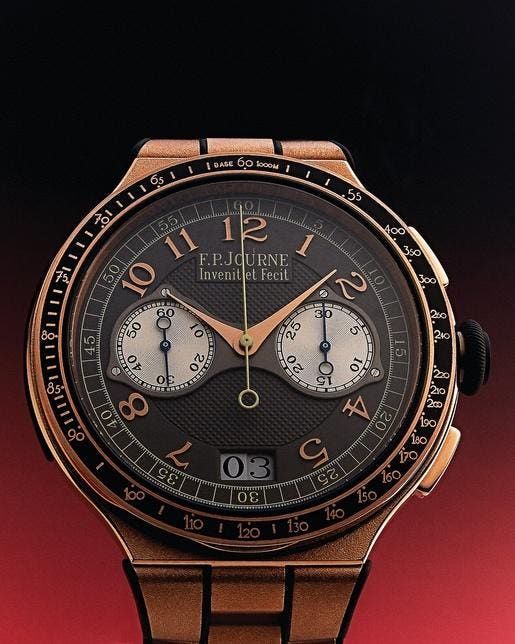Rolex, Patek Philippe, and Audemars Piguet are brands synonymous with elegance, precision, quality and status. For over 100 years, these Swiss watch giants have carefully curated their brands through their storied pasts and commitment to technological innovation. If you were to ask the average person to name a luxury watch brand, they would most likely blurt out one of these Swiss watch brands. Through deliberate pursuit, they have become the heavyweight champs of the horological world. However, smaller, independent watchmakers have emerged to fill in the gaps where the household names don’t want to operate. Why are these niche brands growing in significance and reputation, and how do they compete with the giant Swiss juggernauts?
According to Statista, there are 680 watch manufacturers in Switzerland alone. Of these companies, 17% are considered established players, 16% are considered independent and 66% are classified as microbrands. The top 5 brands have roughly a 50% market share, leaving hundreds of players fighting for relevance.
Many of these smaller companies outsource production, but some possess the financial, technical, and personnel resources to manufacture in-house watches of equal quality to the established brands. These niche firms are usually privately owned, produce limited quantities, and typically focus on unique, innovative designs.
The move to independence is driven by many factors. One of the main reasons is to express creativity, be it artistic or technical. Industry incumbents are rightfully concerned about changing models that have sometimes been around for more than 70 years. So, while technological improvements have been incorporated over the years, basic design features have remained relatively constant. A Rolex Submariner, for example, looks almost identical today as it did in 1953 when it was released. The technology has evolved, but the overall design has remained mostly unchanged. This commitment to design consistency has forced talented visionaries who want to experiment with new designs or production techniques to go independent. These innovators are more concerned with creative control and artistry than expense, production time, or commercial expectations.
One example is Naoya Hida, who has 35 years of experience in the luxury watchmaking industry. His minimalist, vintage-inspired line of timepieces combines classic elements with a contemporary aesthetic that evokes a strong sense of nostalgia. Novice and experienced watch collectors travel to Tokyo and trunk shows worldwide in the hope of being selected to purchase one. “Our target audience is very passionate. Age does not matter,” Hida said in an interview at The Armoury in New York, where he was showcasing his latest collection of watches in early May. Interested buyers are “people who understand the history of watchmaking and display a love of vintage watches.”
Another successful independent watchmaker is François-Paul Journe. He started his watch brand, F.P. Journe, with a deep passion for watchmaking and a desire to create unique, innovative designs that reflected his personal vision and expertise. Going independent gave him complete creative and technical control over the watchmaking process, allowing him to experiment with new concepts and mechanisms that were considered too risky or unconventional for more established brands. For example, his double-patented Centigraphe showcases a hand-wound mechanical movement that isolates the chronograph from the timekeeping function. This approach has enabled him to build a distinct identity in the watchmaking industry, appealing to collectors and enthusiasts who value innovation, craftsmanship, and exclusivity.
Philippe DuFour has a similar story. Considered by many to be the greatest living watchmaker, he handcrafts some of the most sought-after timepieces in the world. Production is limited to less than 20 per year, so the small community of those lucky enough to commission a timepiece from him waits years for their watch to arrive. His Grande et Petite Sonnerie, which took a decade to complete, set a record in 2021 when one piece, which was originally made for the Sultan of Brunei, sold for $9.9 million.
Despite these stories of success, independent watchmakers face a host of challenges. Dealing with the administrative burden and post-production issues are challenges for small watchmakers. Navigating the reams of paperwork associated with international import and export regulations can be complicated, and navigating after-sale servicing requests can take valuable time away from current production goals. Another challenge is hiring top talent, which is one of the major hurdles to growth. Expert engravers, for example, can only produce a limited amount of watches every year with consistent aesthetics and quality.
Communicating brand identity to potential buyers is critical. Independent watchmaker’s marketing strategies often focus on the artistry and story behind each watch, creating a narrative that appeals to connoisseurs and collectors. They typically rely on word of mouth, social media, specialized trade shows, and direct customer relationships. Once established, independent watchmakers often maintain a close, more personal relationship with their customers, providing a level of service that can be highly personalized. The direct-to-consumer marketing model is the bread-and-butter marketing strategy for most smaller brands.
The business model for an independent watchmaker is very different from an established brand like Rolex. Rolex has had decades to refine its production process and deploys a massive research and development budget to enhance its products. It spends tens of millions of dollars every year on promoting its brand through advertising but does not distribute its product through its own retail stores, choosing to sell all models exclusively through its network of authorized dealers. Rolex and its 9,000 employees focus on all aspects of watchmaking, leaving the carefully selected retail stores to handle sales and customer interaction.
Regardless of the origin or the business model, demand for high-quality, unique timepieces remains strong. A Rolex, Patek or A.P. may be the most common starting brand for somebody who wants a luxury watch, but more and more buyers are willing to look at independent brands that have built a reputation for quality and deploy creative designs. The lack of retail supply and high secondary market prices of popular Swiss watches have also helped demand for independent brands that have products available, especially if buyers can get comfortable with the value retention and liquidity of lesser-known brands.
There will always be demand for specific models, whether produced by microbrands, independent watchmakers, or established brands. Smaller watchmakers have carved out a permanent spot in the luxury watch industry by offering unique designs and artistry, limited editions and exclusivity, focusing on niche markets, leveraging quality and precision, and providing enhanced customer service. They are here to stay.
Read the full article here
















